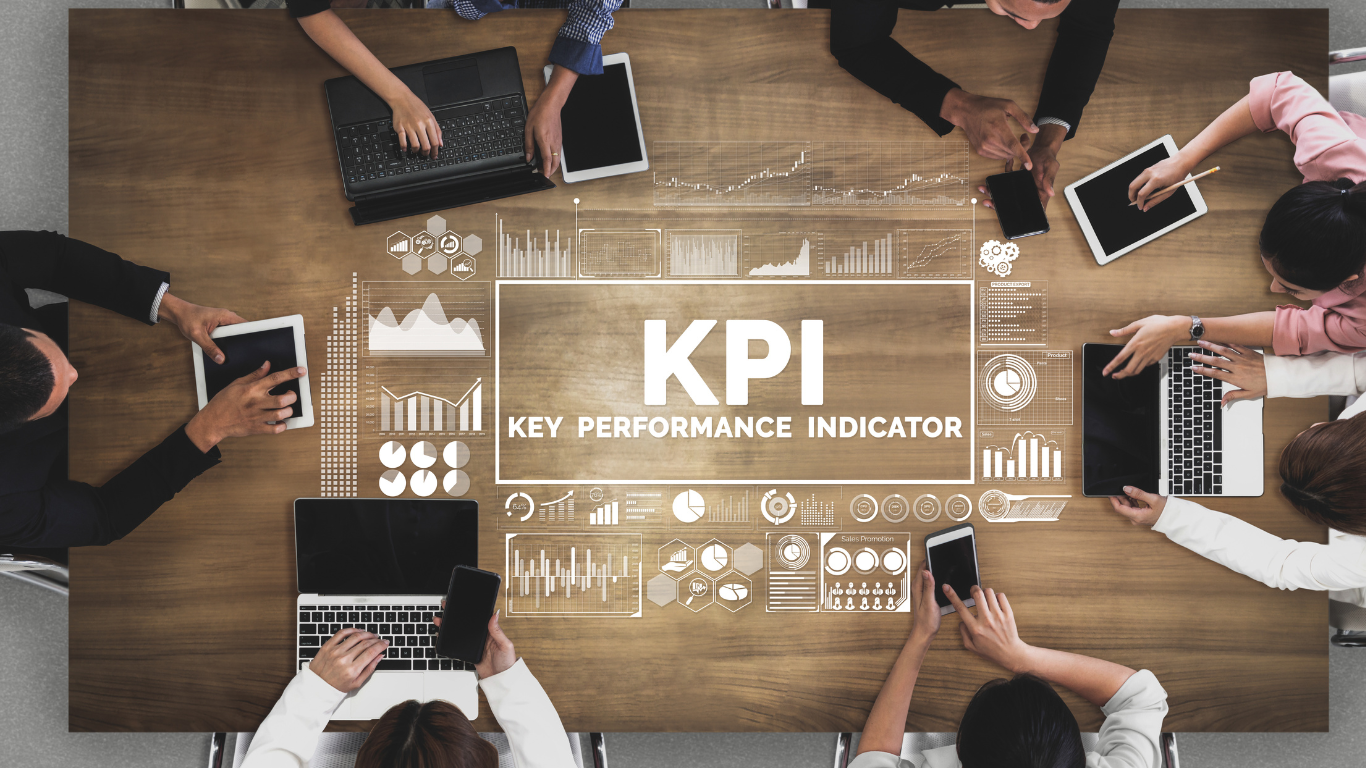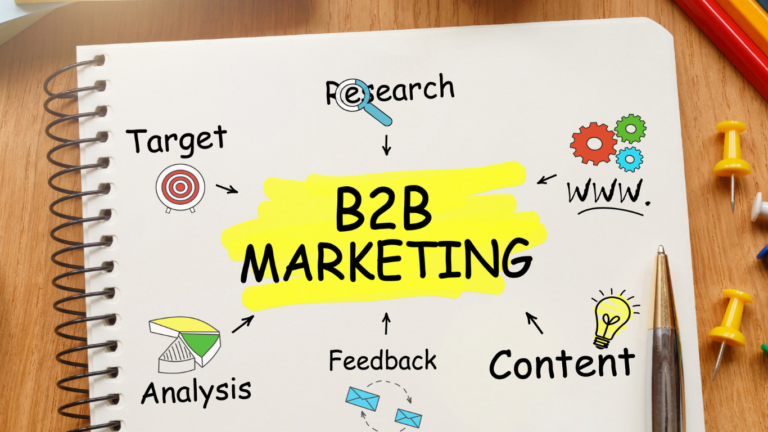Leveraging Performance Marketing Strategies for Sustainable Business Growth
I. Introduction
In today’s fiercely competitive business landscape, the quest for growth is a paramount objective for organizations across industries. Amidst this pursuit, performance marketing emerges as a powerful tool, offering a strategic approach to driving sustainable business growth. In this introductory section, we delve into the significance of performance marketing, defining its core principles and exploring its pivotal role in the digital marketing landscape. Additionally, we introduce the primary and secondary keywords that will guide our exploration of this crucial topic.
1. Brief Overview of the Importance of Performance Marketing in Driving Business Growth
Performance marketing stands as a beacon of efficiency and accountability in the realm of digital marketing. Unlike traditional marketing methods that rely on broad-reaching tactics, performance marketing operates on the principle of delivering measurable results. By focusing on specific actions such as clicks, leads, or sales, performance marketing provides businesses with a tangible framework for evaluating the effectiveness of their marketing efforts. In essence, it serves as a catalyst for driving tangible business growth, offering a clear path to achieving desired outcomes in a highly competitive market landscape.
2. Definition of Performance Marketing and Its Significance in the Digital Marketing Landscape
Performance marketing can be defined as a data-driven approach to marketing that emphasizes measurable results. Unlike traditional marketing, which often relies on subjective measures of success, performance marketing prioritizes accountability and ROI. By leveraging data analytics and advanced targeting techniques, performance marketers can optimize campaigns to achieve specific business objectives, whether it be increasing website traffic, generating leads, or driving sales. In the digital marketing landscape, where competition is fierce and consumer behavior is constantly evolving, performance marketing emerges as a crucial strategy for businesses seeking to stay ahead of the curve and drive sustainable growth.
3. Introduction to Primary and Secondary Keywords
As we embark on our exploration of performance marketing and its role in driving sustainable business growth, it’s essential to identify the primary and secondary keywords that will guide our discussion. Our primary keyword, “Performance marketing,” encapsulates the central theme of our exploration, highlighting the pivotal role of data-driven marketing strategies in achieving measurable results. Complementing this, our secondary keywords, “Business growth through performance marketing,” “Growth Marketing,” “Data-Driven Marketing,” and “Digital Marketing,” offer additional context, emphasizing key aspects of our discussion, such as the symbiotic relationship between marketing strategies and business growth and the importance of leveraging data and digital channels in today’s competitive landscape.
In the subsequent sections, we will delve deeper into the core principles of performance marketing, explore its symbiotic relationship with business growth, and examine strategies for leveraging growth marketing tactics to enhance its effectiveness. Through real-world examples, best practices, and actionable insights, we will equip businesses with the knowledge and tools they need to harness the power of performance marketing for sustainable growth.
II. Understanding Performance Marketing
In this section, we delve into the fundamental principles of performance marketing, highlighting its distinguishing features from traditional marketing methods and elucidating the pivotal role of data-driven strategies in driving business growth.
1. Definition and Core Principles of Performance Marketing
Performance marketing represents a paradigm shift in the world of marketing, emphasizing accountability, measurability, and ROI. Unlike traditional marketing approaches that rely on subjective metrics like brand awareness and reach, performance marketing focuses on specific actions or outcomes, such as clicks, leads, or conversions. At its core, performance marketing is driven by the principle of delivering measurable results, allowing businesses to optimize their marketing efforts based on tangible performance metrics.
2. Differentiation from Traditional Marketing Methods
One of the key distinctions between performance marketing and traditional marketing lies in their approach to measurement and accountability. While traditional marketing methods often prioritize brand-building and awareness, performance marketing prioritizes direct response and action. By focusing on measurable outcomes, performance marketers can assess the effectiveness of their campaigns in real time and make data-driven adjustments to optimize performance.
3. Explanation of Data-Driven Marketing and its Role in Performance Marketing Strategies
Central to the success of performance marketing is the utilization of data-driven strategies. Data analytics tools and techniques enable performance marketers to gather insights into consumer behavior, preferences, and engagement patterns. By leveraging data, performance marketers can segment audiences, personalize messaging, and optimize campaign targeting for maximum impact. In essence, data-driven marketing forms the cornerstone of performance marketing strategies, empowering businesses to make informed decisions and drive meaningful results.
4. Highlighting the Relevance of Digital Marketing in Today’s Business Environment
In today’s increasingly digitized world, digital marketing has emerged as a cornerstone of business growth strategies. From social media advertising to search engine marketing, digital channels offer unprecedented opportunities for businesses to reach and engage their target audience. Performance marketing harnesses the power of digital channels to deliver targeted, measurable results, making it an indispensable component of modern marketing strategies.
As we continue our exploration of performance marketing, we will delve deeper into its role in driving business growth, showcasing real-world examples and best practices for leveraging data-driven strategies to achieve sustainable results. Through actionable insights and practical guidance, businesses will gain a deeper understanding of how performance marketing can propel them towards their growth objectives.
III. Driving Business Growth through Performance Marketing
In this section, we delve into the tangible impact of performance marketing on driving business growth, backed by real-world examples and insights into key metrics used to measure success.
1. Case Studies Demonstrating Successful Business Growth
Example 1: E-commerce Success Story
One compelling example of the power of performance marketing in driving business growth is the case of an e-commerce startup that utilized targeted digital advertising campaigns to increase its customer base and revenue. By implementing data-driven strategies, including precise audience targeting and personalized messaging, the company was able to achieve a significant uplift in website traffic, conversions, and sales. This success underscores the effectiveness of performance marketing in driving tangible business outcomes.
Example 2: SaaS Company Expansion
Another illustrative case study involves a Software as a Service (SaaS) company that leveraged performance marketing tactics to expand its user base and market reach. Through strategic use of search engine marketing (SEM), social media advertising, and email marketing, the company was able to acquire new customers, drive product sign-ups, and increase subscription revenue. By adopting a data-driven approach to marketing, the company achieved sustainable growth while optimizing its marketing spend for maximum ROI.
2. Exploring the Symbiotic Relationship between Performance Marketing and Business Growth
Performance marketing and business growth are inherently intertwined, with each serving as a catalyst for the other’s success. Performance marketing enables businesses to reach their target audience with precision, driving engagement, conversions, and ultimately, revenue growth. In turn, business growth creates opportunities for further investment in performance marketing, fueling a cycle of sustained expansion and success. By recognizing the symbiotic relationship between performance marketing and business growth, companies can unlock new avenues for growth and prosperity.
3. Overview of Key Metrics for Measuring Performance Marketing Success
In the realm of performance marketing, success is measured by a variety of key metrics that gauge the effectiveness of marketing campaigns and initiatives. These metrics may include:
- Conversion Rate: The percentage of website visitors who complete a desired action, such as making a purchase or filling out a form.
- Return on Ad Spend (ROAS): The ratio of revenue generated to the cost of advertising, indicating the profitability of marketing campaigns.
- Customer Acquisition Cost (CAC): The average cost of acquiring a new customer, calculated by dividing total marketing spend by the number of new customers acquired.
- Lifetime Value (LTV): The predicted revenue generated by a customer over the course of their relationship with a business, providing insight into customer retention and long-term profitability.
- Click-Through Rate (CTR): The percentage of users who click on an ad or promotional link, indicating the effectiveness of ad messaging and targeting.
By tracking and analyzing these key metrics, businesses can gain valuable insights into the performance of their performance marketing efforts, identify areas for improvement, and optimize strategies for continued growth and success.
4. Importance of Targeted Audience Engagement and Retention
Beyond driving initial conversions and sales, performance marketing plays a critical role in nurturing long-term customer relationships and fostering brand loyalty. By delivering personalized messaging, relevant content, and seamless user experiences, performance marketers can engage with customers at every stage of the buyer’s journey, from initial awareness to post-purchase engagement. This focus on targeted audience engagement and retention is essential for sustainable business growth, as loyal customers are more likely to become repeat buyers, brand advocates, and ambassadors for the brand.
As we delve deeper into the symbiotic relationship between performance marketing and business growth, we will explore strategies for leveraging data-driven insights to optimize performance marketing campaigns, drive meaningful results, and achieve sustainable growth objectives. Through actionable guidance and best practices, businesses will gain a deeper understanding of how performance marketing can propel them towards their growth goals.
IV. Leveraging Growth Marketing Strategies
In this section, we explore the synergies between performance marketing and growth marketing, highlighting how the integration of growth marketing tactics can enhance the effectiveness of performance marketing campaigns.
1. Introduction to Growth Marketing
Defining Growth Marketing:
Growth marketing encompasses a holistic approach to marketing that focuses on driving sustainable business growth through iterative experimentation, data-driven optimization, and cross-functional collaboration. Unlike traditional marketing methods that prioritize top-of-funnel activities, growth marketing encompasses the entire customer lifecycle, from acquisition to retention and referral.
Differentiating Growth Marketing from Performance Marketing:
While performance marketing emphasizes measurable results and precise targeting, growth marketing takes a broader view, encompassing strategies to fuel long-term, sustainable growth. While performance marketing tactics may focus on driving immediate conversions and sales, growth marketing strategies prioritize building lasting customer relationships, maximizing customer lifetime value, and fostering organic growth through word-of-mouth and referrals.
2. Enhancing Performance Marketing with Growth Marketing Tactics
Optimizing the Customer Journey:
One of the key tenets of growth marketing is the optimization of the customer journey to maximize conversion rates and retention. By leveraging growth marketing principles, performance marketers can map out the customer journey, identify pain points and friction, and implement strategies to streamline the path to purchase. This may involve A/B testing different messaging, creative assets, and user experiences to identify the most effective strategies for engaging and converting customers.
Experimentation and Iteration:
Growth marketing is inherently iterative, with a focus on continuous experimentation and optimization. By adopting a culture of experimentation within performance marketing teams, marketers can test new ideas, hypotheses, and strategies to uncover insights and drive performance improvements. This may involve conducting controlled experiments, analyzing data, and iterating on campaigns in real-time to maximize ROI and drive sustainable growth.
Data-Driven Decision-Making:
Both growth marketing and performance marketing rely on data-driven decision-making to inform strategy and optimize performance. By leveraging data analytics tools and platforms, marketers can gain insights into customer behavior, preferences, and trends, allowing them to tailor marketing efforts to effectively target and engage their audience. By harnessing the power of data, performance marketers can identify opportunities for growth, optimize campaigns for maximum impact, and drive sustainable business growth over time.
Cross-Functional Collaboration:
Growth marketing emphasizes collaboration across departments, bringing together marketing, product, engineering, and analytics teams to align strategies and drive results. By fostering cross-functional collaboration within performance marketing teams, marketers can leverage the diverse expertise and perspectives of team members to develop innovative strategies, iterate on campaigns, and drive continuous improvement. This collaborative approach enables performance marketers to overcome challenges, capitalize on opportunities, and achieve sustainable growth objectives.
3. Harnessing the Power of Growth Hacking
Understanding Growth Hacking:
Growth hacking is a subset of growth marketing that focuses on rapid experimentation and scalability to achieve accelerated growth. While growth hacking tactics may differ from traditional marketing methods, the underlying principles remain the same: driving sustainable, data-driven growth through iterative experimentation and optimization.
Integration with Performance Marketing:
While growth hacking tactics may initially focus on driving short-term spikes in growth, the ultimate goal is to fuel long-term, sustainable growth. By integrating growth hacking principles into performance marketing campaigns, marketers can leverage tactics such as viral marketing, referral programs, and product optimizations to drive rapid growth while laying the foundation for sustained success. This may involve testing new acquisition channels, optimizing landing pages for conversions, and leveraging social proof to drive word-of-mouth referrals.
As we explore the integration of growth marketing strategies into performance marketing campaigns, we will uncover actionable insights and best practices for maximizing ROI, driving sustainable growth, and achieving long-term success. Through a strategic combination of performance marketing tactics and growth marketing principles, businesses can unlock new opportunities for growth, innovation, and competitive advantage in today’s dynamic digital landscape.
V. Data-Driven Approaches for Sustainable Growth
In this section, we delve into the importance of data-driven approaches within performance marketing strategies to achieve sustainable growth. By harnessing the power of data analytics and optimization techniques, businesses can make informed decisions, optimize campaigns, and drive continuous improvement.
1. Leveraging Data Analysis Techniques
Importance of Data Analysis:
Data analysis lies at the heart of performance marketing, providing marketers with valuable insights into customer behavior, campaign performance, and market trends. By analyzing data from various sources, including website analytics, ad platforms, and customer relationship management (CRM) systems, marketers can gain a deeper understanding of their audience, identify opportunities for optimization, and make data-driven decisions to maximize ROI.
Key Data Analysis Techniques:
- Audience Segmentation: Divide your audience into distinct segments based on demographics, behaviors, or other relevant criteria to tailor your marketing efforts and messaging.
- Campaign Performance Analysis: Monitor key performance indicators (KPIs) such as click-through rates (CTR), conversion rates, and return on ad spend (ROAS) to assess the effectiveness of your campaigns and identify areas for improvement.
- Attribution Modeling: Attribute conversions and sales to specific marketing touchpoints along the customer journey to understand the impact of each channel and optimize budget allocation.
- Predictive Analytics: Utilize historical data and predictive modeling techniques to forecast future trends, anticipate customer behavior, and optimize marketing strategies for maximum impact.
2. Importance of Continuous Optimization
Continuous Improvement Cycle:
Performance marketing is an iterative process that requires ongoing optimization to drive sustainable growth. By adopting a mindset of continuous improvement, marketers can refine their strategies, experiment with new tactics, and adapt to changing market conditions to stay ahead of the competition.
A/B Testing and Experimentation:
A/B testing, also known as split testing, involves comparing two versions of a marketing asset (such as an ad creative or landing page) to determine which performs better in terms of engagement or conversion rates. By systematically testing different variables and analyzing the results, marketers can identify winning variations and optimize their campaigns for maximum effectiveness.
Optimizing the Customer Experience:
Optimizing the customer experience is essential for driving sustainable growth and maximizing customer lifetime value. By analyzing user behavior, identifying pain points, and removing friction from the customer journey, marketers can enhance the overall customer experience, increase satisfaction, and drive repeat business.
3. Utilizing Customer Segmentation and Targeting
Personalization and Targeted Marketing:
Personalization is key to engaging today’s consumers and driving meaningful interactions. By segmenting your audience based on demographics, behaviors, or preferences, you can deliver more relevant, targeted messaging that resonates with individual customers and drives higher conversion rates.
Dynamic Content and Messaging:
Dynamic content allows marketers to customize messaging and creative assets based on individual user attributes or behaviors. By delivering personalized content tailored to each customer’s unique needs and interests, marketers can increase engagement, drive conversions, and build stronger relationships with their audience.
4. The Role of Conversion Rate Optimization (CRO)
Maximizing Conversion Rates:
Conversion rate optimization (CRO) is the process of improving the percentage of website visitors who take a desired action, such as making a purchase or filling out a lead form. By optimizing key elements of your website or landing pages, such as layout, messaging, and calls-to-action, you can increase conversion rates and maximize the impact of your performance marketing efforts.
Testing and Iteration:
CRO is an ongoing process that requires testing and iteration to identify the most effective strategies for driving conversions. By conducting experiments, analyzing results, and making data-driven decisions, marketers can optimize their conversion funnels and unlock new opportunities for growth and success.
By embracing data-driven approaches, continuous optimization, and customer-centric strategies, businesses can leverage the power of performance marketing to achieve sustainable growth, drive meaningful connections with their audience, and unlock new opportunities for innovation and success in today’s competitive marketplace.
VI. Best Practices for Business Growth through Performance Marketing
In this section, we will explore the best practices that businesses can adopt to leverage performance marketing effectively for driving growth and achieving long-term success. By following these guidelines, businesses can optimize their performance marketing efforts, enhance audience engagement, and maximize their return on investment (ROI).
1. Overview of Best SEO Practices
Importance of SEO in Performance Marketing:
Search engine optimization (SEO) plays a crucial role in performance marketing by improving a website’s visibility and driving organic traffic from search engines. By optimizing website content, meta tags, and other on-page elements, businesses can increase their chances of ranking higher in search engine results pages (SERPs) and attracting qualified leads.
Key SEO Practices:
- Keyword Research: Identify relevant keywords and phrases that your target audience is likely to use when searching for products or services related to your business.
- On-Page Optimization: Optimize your website’s meta titles, descriptions, headers, and content to align with your target keywords and improve search engine visibility.
- Content Creation: Create high-quality, relevant content that provides value to your audience and addresses their needs, interests, and pain points.
- Link Building: Build backlinks from reputable websites and directories to improve your website’s authority and credibility in the eyes of search engines.
2. Creating Valuable Content and Engaging Storytelling
The Power of Content Marketing:
Content marketing is a cornerstone of performance marketing, enabling businesses to educate, inform, and engage their audience through compelling storytelling and valuable content. By creating content that resonates with their audience and adds value, businesses can build brand awareness, establish thought leadership, and drive customer engagement and loyalty.
Effective Content Strategies:
- Identify Your Audience: Understand your target audience’s demographics, interests, and preferences to create content that resonates with them and addresses their needs and pain points.
- Tell Compelling Stories: Use storytelling techniques to captivate your audience, evoke emotion, and communicate your brand’s message in a memorable and impactful way.
- Provide Value: Offer valuable insights, tips, and resources that help your audience solve problems, achieve their goals, or improve their lives.
- Be Authentic and Transparent: Build trust with your audience by being authentic, transparent, and honest in your communications and interactions.
3. Strategies for Building and Nurturing Long-Term Customer Relationships
The Importance of Customer Retention:
Customer retention is essential for sustainable business growth, as it costs less to retain existing customers than to acquire new ones. By building strong, long-term relationships with their customers, businesses can increase customer loyalty, drive repeat purchases, and generate positive word-of-mouth referrals.
Customer Relationship Management (CRM) Strategies:
- Personalized Communication: Tailor your communications and interactions to each customer’s preferences, interests, and purchase history to make them feel valued and appreciated.
- Loyalty Programs: Reward loyal customers with exclusive discounts, promotions, or perks to incentivize repeat purchases and encourage brand loyalty.
- Feedback and Engagement: Solicit feedback from your customers through surveys, reviews, or social media interactions, and use their input to improve your products, services, and overall customer experience.
- Ongoing Support and Engagement: Provide ongoing support and assistance to your customers, even after the sale is complete, to build trust, loyalty, and advocacy for your brand.
4. Incorporating Emerging Technologies and Industry Trends
Adapting to Technological Advancements:
In today’s fast-paced digital landscape, businesses must stay abreast of emerging technologies and industry trends to remain competitive and drive growth. By embracing innovation and adopting new technologies, businesses can gain a competitive edge, improve efficiency, and unlock new opportunities for growth and success.
Key Trends to Watch:
- Artificial Intelligence (AI) and Machine Learning: Harness the power of AI and machine learning to automate tasks, personalize customer experiences, and optimize marketing campaigns for maximum effectiveness.
- Voice Search Optimization: Optimize your website and content for voice search to capitalize on the growing popularity of voice-enabled devices and virtual assistants.
- Augmented Reality (AR) and Virtual Reality (VR): Explore the potential of AR and VR technologies to create immersive, interactive experiences that engage and delight your audience in new and innovative ways.
- Mobile Marketing and Omnichannel Strategies: Embrace mobile marketing and omnichannel strategies to reach customers wherever they are, across multiple devices and touchpoints, and deliver seamless, cohesive experiences across the entire customer journey.
By adopting these best practices and staying ahead of emerging trends, businesses can harness the full potential of performance marketing to drive sustainable growth, build meaningful connections with their audience, and achieve their business objectives in today’s competitive marketplace.
VII. Addressing Challenges and Ensuring Success
In this section, we will explore the common challenges that businesses may face when implementing performance marketing strategies and discuss strategies for overcoming these challenges to ensure success.
1. Identification and Mitigation of Common Challenges
Ad Fraud and Quality Assurance:
One of the most significant challenges in performance marketing is the threat of ad fraud, which can result in wasted ad spend and inaccurate campaign performance data. To mitigate this risk, businesses should implement robust quality assurance measures, such as monitoring traffic sources, detecting suspicious activity, and working with trusted ad networks and publishers.
Privacy Concerns and GDPR Compliance:
With increasing concerns about data privacy and regulations like the General Data Protection Regulation (GDPR), businesses must ensure compliance with relevant laws and regulations when collecting, storing, and processing customer data. This includes obtaining explicit consent from users, implementing data protection measures, and providing transparency about how data is used and shared.
2. Importance of Ethical Marketing Practices
Adherence to Ethical Standards:
Ethical marketing practices are essential for maintaining trust and credibility with customers and stakeholders. Businesses should prioritize honesty, transparency, and integrity in their marketing communications and avoid misleading or deceptive tactics that could harm their reputation and erode customer trust.
Compliance with Regulations:
Businesses must adhere to relevant laws, regulations, and industry standards governing marketing practices, such as consumer protection laws, advertising standards, and data protection regulations. By staying compliant with legal requirements and industry best practices, businesses can mitigate legal risks and build credibility with customers and regulators.
3. Setting Clear Objectives and KPIs
Establishment of Clear Goals:
To measure the success of performance marketing campaigns effectively, businesses must establish clear objectives and key performance indicators (KPIs) that align with their overall business goals. Whether it’s increasing website traffic, generating leads, or driving sales, defining specific, measurable goals provides a framework for evaluating campaign performance and making data-driven decisions.
Continuous Monitoring and Optimization:
Once goals and KPIs are defined, businesses should continuously monitor campaign performance, analyze data, and optimize strategies to improve results over time. By tracking key metrics, identifying areas for improvement, and making data-driven adjustments, businesses can maximize the effectiveness of their performance marketing efforts and drive sustainable growth.
4. Commitment to Continuous Learning and Professional Development
Embracing a Culture of Learning:
In the fast-paced world of digital marketing, staying ahead of the curve requires a commitment to continuous learning and professional development. Businesses should encourage their marketing teams to stay updated on industry trends, emerging technologies, and best practices through ongoing training, certifications, and participation in industry events and conferences.
Investment in Skills and Expertise:
Investing in the skills and expertise of their marketing teams is essential for building a competitive advantage and driving innovation. Whether it’s attending workshops, pursuing advanced certifications, or gaining hands-on experience with new tools and technologies, businesses should empower their teams to grow and evolve in their roles as performance marketers.
By addressing these common challenges and adopting strategies for success, businesses can overcome obstacles, optimize their performance marketing efforts, and achieve their growth objectives in today’s dynamic digital landscape.
VIII. Conclusion
In the concluding section of our exploration into the role of performance marketing in driving sustainable business growth, we summarize the key takeaways and emphasize the importance of leveraging performance marketing strategies for long-term success.
Recap of Key Points
Throughout this blog, we’ve delved into the fundamentals of performance marketing and its significance in the digital marketing landscape. We’ve discussed how performance marketing differs from traditional marketing methods, emphasizing its data-driven approach and focus on measurable results. By understanding the core principles of performance marketing and its role in driving business growth, businesses can better position themselves for success in today’s competitive marketplace.
Catalyst for Sustainable Growth
Performance marketing serves as a catalyst for sustainable business growth by enabling businesses to reach and engage their target audience effectively. Through targeted audience engagement, data-driven decision-making, and continuous optimization, businesses can maximize the impact of their marketing efforts and achieve long-term success.
Call to Action
As businesses navigate the complexities of the digital landscape, it’s essential to recognize the value of performance marketing in driving sustainable growth. By incorporating performance marketing strategies into their marketing initiatives and embracing a culture of continuous learning and innovation, businesses can unlock new opportunities for growth and stay ahead of the competition.
Embrace Performance Marketing for Future Success
In conclusion, we encourage businesses to embrace performance marketing as a cornerstone of their growth strategy. By leveraging the principles of performance marketing and adopting a data-driven approach, businesses can drive sustainable growth, build lasting customer relationships, and thrive in an ever-evolving digital environment.
As we conclude our discussion on the role of performance marketing in driving sustainable business growth, we invite businesses to explore the possibilities and embrace the power of performance marketing for future success.





